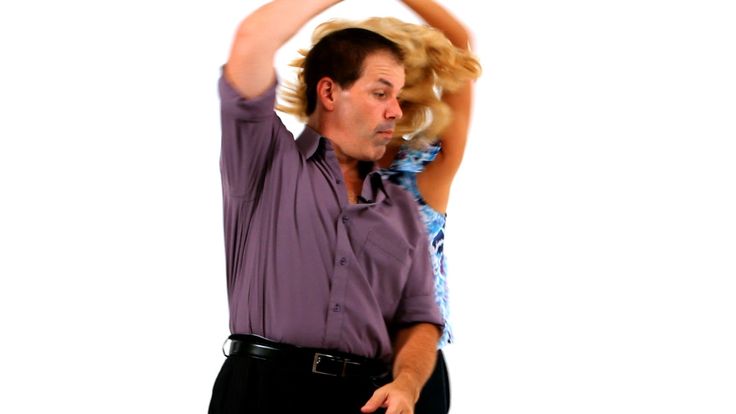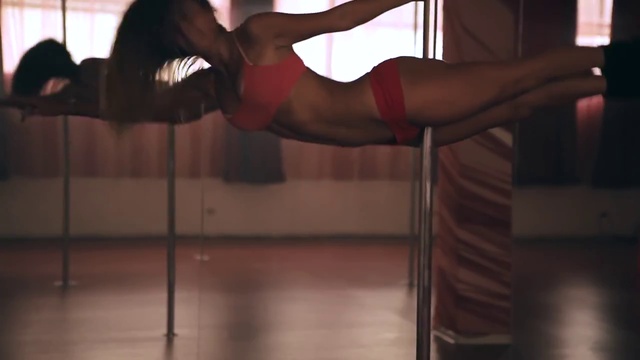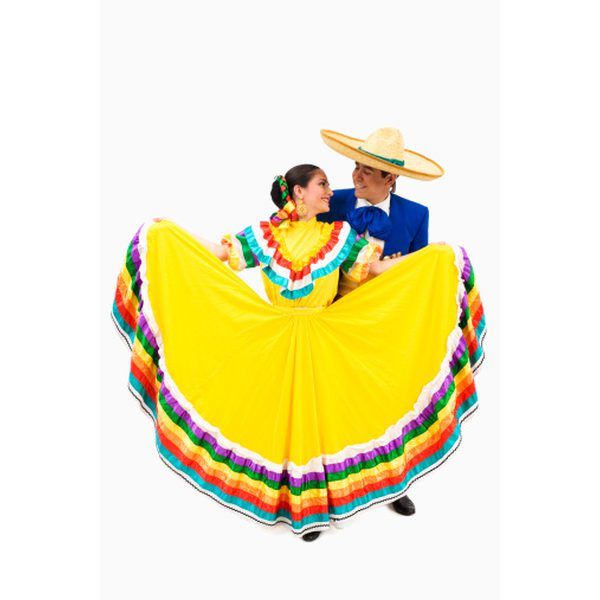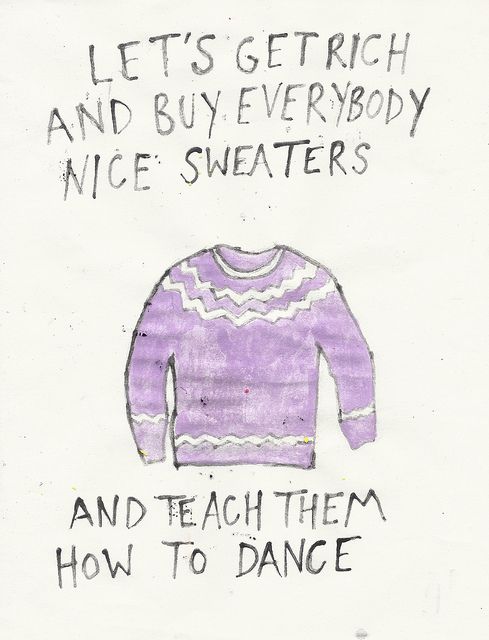How to do swing dance tricks
How To Swing Dance For Beginners (Step By Step Guide)
Table Of Contents:
Swing Dance History & Character
How To Count In Swing
Swing Basic Step #1 – Video
Swing Basic Step #2 – Video
Learning how to Swing dance isn’t rocket science…
Like all Ballroom dances, Swing dancing is based on specific basic steps that once mastered can be applied to all kinds of turns, hand swaps and spins. Below you will learn the 2 main basics steps of Swing.
What is Swing Dancing?
This style of Swing is East Coast Swing which originates from Lindy Hop. It is a Stationary partner dance that doesn’t travel much – Meaning it is pretty much danced on the same spot – As opposed to a traveling Ballroom dance like Waltz. The character of this dance is playful and lively. There are a lot of turns and spins that make this dance really fun for couples.
Swing Songs To Practice To:
* Many of the popular songs played on the radio fit this dance including:
Zac Brown Band – Loving You Easy – Slow Tempo
Michael Bublé – Haven’t Met You Yet – Faster Tempo
How To Count The Swing
Beginner Way of Counting the Swing:
Rock Step, Triple Step, Triple Step.
The Count using numbers:
1,2 (Rock Step), 3 a 4 (Triple Step), 5 a 6 (Triple Step).
* We strongly recommend that you count in the beginner way for a while. However, it is important to understand that the rocks step has two full weight changes to 2 beats of music. And the triple steps (3 a 4 Or 5 a 6) have three weight changes to only 2 beats of music. This makes the triple steps faster.
How to Swing Dance – Basic Step #1:
Breakdown of the Swing Steps (East Coast)
Men:
Starting with left foot
Rock step – Step back with left and replace on right.
Triple step to left – Side, close, side (left, right, left)
Trip step to right – Side, close, side (right, left, right)
Women:
Starting with right foot
Rocks step – Step back with right and replace on left.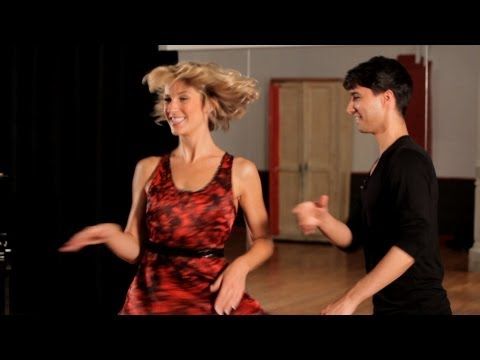
Triple step to right – Side, close, side (right, left, right)
Triple step to left – Side, close, side (left, right, left)
The Lead:
* Connect fwd to each other before starting to dance.
Leaders: Apply pressure fwd using the entire body but mostly the left arm (For the rock step). Make sure to extend the elbow slightly. Now, after the rock step, using your body weight and right arm connection, lead the followers to triple side steps in both directions. Ladies, don’t anticipate the lead – Simply connect forward to your partner to feel his lead.
Basic #2: Swing Outside Turn (Right Underarm):
Breakdown of Outside Turn (Above)
Men:
Starting with left foot
Rock step – Step back with left and replace on right.
Triple step to left – Side, close, side (left, right, left)
PIVOT 1/4 to left (On left foot)
Trip step to right – Side, close, side (right, left, right)
Women:
Starting with right foot
Rocks step – Step back with right and replace on left.
Triple step to right – Side, close, side (right, left, right)
PIVOT 3/4 to right (On right foot)
Triple step to left – Side, close, side (left, right, left)
The Lead:
* Connect fwd to each other before starting to dance.
Leaders: Just like in the most basic step, extend your left arm to the followers to allow her to do her Rock Step. Immediately after, as you do the side triple step to the left – raise the left arm just above the follower’s head (indicating a turn coming up). Now on count “&” circle the left arm over the follower’s head as she turns underarm. Make sure to extend your arm to clear your partner’s head.
Other Swing Moves you should learn:
– The Inside turn
– Changing hands behind back
– The Cuddle turn
– The Stop and Go
– Kicks & Flicks
Check out all our Swing dance lessons
Want More Dance Lessons?
We offer a membership that includes access to 300+ Ballroom and Latin dance videos online. Including American & International style videos.
Including American & International style videos.
Membership Info & Registration
Get More Dance Lessons:
How to Ballroom dance For Beginners
How To Cha Cha Dance
Rumba Dance Steps
How To Waltz
Salsa Basic Steps
How To Dance Bachata
How To Dance At Weddings
Learn Basic Swing Steps
Swing is a lively, non-progressive partner dance that can be danced to a wide variety of music, from blues to rock & roll. Non-progressive means it's mostly performed in one spot, so it's very convenient on a crowded dance floor.
- Basic steps
- Instructions & Diagrams
- Video
- Recommended Video Lessons »
Quick intro
Swing is one of the most versatile partner dances you can learn - very social and beginner friendly. Easily adaptable to a wide range of tempos, it involves movements with lots of swinging, spinning and rhythmic, creative footwork.
There are many different styles of swing, the term actually refers to a group of dances that developed from the swing style of jazz music in the first half of the last century. There's Lindy Hop, Boogie-Woogie, Jitterbug, Shag, Charleston, West Coast and East Coast Swing, just to name a few. Each of these dances has its own distinct flavor.
One of the most popular and very suitable for beginners is the East Coast Swing. It's a bit more social and relaxed than other versions. It's also a formal ballroom dance and the easiest to learn. Perfect for beginners, which is why we'll focus on this version here. It will create a good foundation and is the base for other more complex versions.
East Coast Swing can be danced to a variety of music styles. If it's written in 4/4 time and has a tempo between 135-170 beats per minute, you can swing it.
To dance swing you'll need a partner, a sense of humor, and a bit of endurance. It may seem a bit intimidating at first, especially if you're watching those who really mastered it. But as with all things, you have to start with the basics. And the basics are easy. Once you learn the fundamentals, you'll be swinging in no time. Always remember, wear comfortable shoes. Now let's go swinging.
But as with all things, you have to start with the basics. And the basics are easy. Once you learn the fundamentals, you'll be swinging in no time. Always remember, wear comfortable shoes. Now let's go swinging.
Basic steps (East Coast Swing)
Beginners usually start with East Coast Swing, because it is the easiest of all swing styles. Here we will show you the basic 6 count step for East Coast Swing.
East Coast Swing has a basic count of 1&2, 3&4, 5,6. It's known as a triple step swing. The basic pattern is triple step, triple step, and a rock step.
When you're starting out you can replace the triple step with a single step. In that case the pattern would be step, step, rock step or rock step, step, step, depending on how you start counting. The overall progression is, of course, the same.
The triple step is really not that difficult to master, it is performed in a chasse-like manner - side step, together, side step.
Instructions & Diagrams:
Basic Steps For Men: The man starts with his left foot.
- 1&2: Triple step (chasse) to the left (left-right-left)
- 3&4: Triple step to the right (right-left-right)
- 5: Step backward with your left foot
- 6: Weight shifts to your right foot
Basic Steps For Women: The woman starts with her right foot.
- 1&2: Triple step (chasse) to the right (right-left-right)
- 3&4: Triple step to the left (left-right-left)
- 5: Step backward with your right foot
- 6: Weight shifts to your left foot
Remember, keep the steps small.
Video
Leon and Kim will show you the basic steps, how to turn, and more:
more videos »
Now let's have some more fun, let's do some kicking:
Where to go next?
When you're ready for more fun, check out our recommended video lessons. Video is a great way to learn dancing.
Acrobatic tricks in dance. Sports and acrobatic elements in dancing
Today I want to touch on the topic of acrobatics. In recent years, many teams have begun to use acrobatic stunts in their numbers. In my opinion, it really decorates the room.
The only thing worth remembering is that dance is primary, and acrobatics only complements and decorates it. Some choreographers get too carried away and forget about it. As a result, we get not a dance, but an acrobatic sketch.
As a result, we get not a dance, but an acrobatic sketch.
Here is an example of what not to do.
I don't know about you, dear friends, but for the first time I noticed the use of acrobatic elements in the numbers of the Todes show-ballet. And I really liked it! Elements of acrobatics greatly enhance the effect and give the usual number an element of show.
The well-known team "Exciton" also widely uses elements of acrobatics in their performances, which make the performances brighter, stronger, enhance the impression.
I think many have seen this Exciton video.
It's great, isn't it? Of course, behind this is a huge work, both children and teachers. But what an effect!
Of course, not all choreographers can afford to introduce acrobatic elements into their performances. There are many reasons. Most importantly, you need to know how to do it. Here, too, there is a technique. You can’t just say to a child: “Make a wheel!” He does not know how, he is afraid.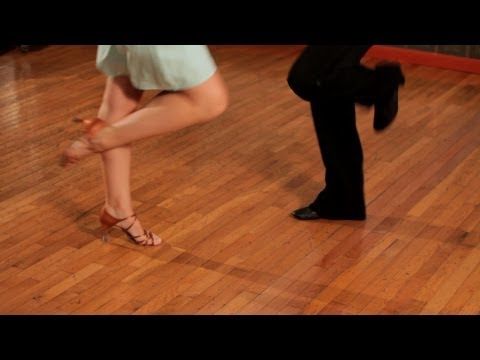 As a result, nothing comes out. It is good if the teacher can show how it is done, sort it out, but not every teacher is given this due to age or any other reasons. How then to be?
As a result, nothing comes out. It is good if the teacher can show how it is done, sort it out, but not every teacher is given this due to age or any other reasons. How then to be?
Secondly, it is imperative to observe safety precautions. This is a hazardous activity. Be sure to study all the elements under the supervision of a teacher and on mats.
I won't go far. As they say, a living example is nearby. Having moved to a new place of residence 8 months ago, I gave my daughter to the team, where choreography with elements of acrobatics is in progress.
My surprise knew no bounds when I saw that the children were doing somersaults, flips, etc. on the wooden floor. After classes, my daughter came with a red back, I generally keep quiet about bruises. I went to class reluctantly.
Then something happened to our neck, apparently some kind of displacement of the vertebrae. When you turn your head it sounds like something clicks. At the same time, the daughter said that the teacher did not insure her.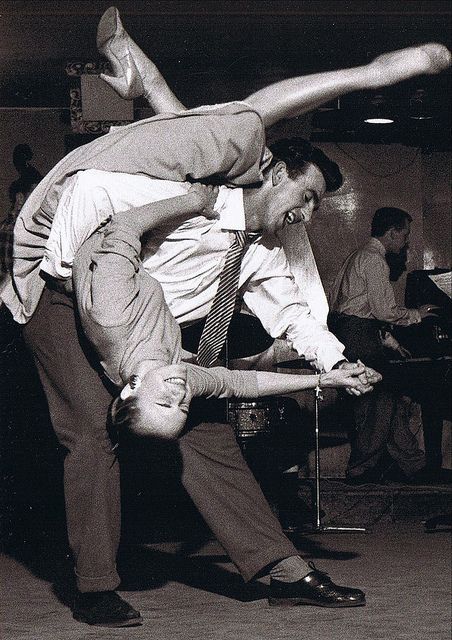 Yes, and others too. She just said, "Do it!" Here is the result!
Yes, and others too. She just said, "Do it!" Here is the result!
To my question: "Why don't children practice elements on mats?" the teacher answered: “They will not have mats on stage. Let them get used to it! I decided to consult the experts.
First of all I turned to my cousin, she is an acrobatics coach. She was very surprised by this teaching method and said that they work out all the elements only on mats. Children are placed on the bare floor only when they are ready for it. Then I turned to another specialist with the same question. The answer was the same.
In general, I failed to get through to the teacher, so we decided to leave this team. As a memory from the classes, only the displacement of the cervical vertebrae remained. Not very pleasant, of course!
Therefore, dear choreographers, if you don't know something, you should definitely consult with specialists, and not engage in amateur performances. Children's health is the most important thing! This must be remembered!
The best thing is to take advanced training courses to experience everything for yourself. Although, of course, not every teacher, due to age and physical data, will be able to do this. In this case, you must definitely buy a book or video course in order to at least learn the teaching methodology, and not engage in amateur performances.
Although, of course, not every teacher, due to age and physical data, will be able to do this. In this case, you must definitely buy a book or video course in order to at least learn the teaching methodology, and not engage in amateur performances.
In connection with today's topic, I have a few questions. Do you use elements of acrobatics in your team? What elements do you study and where did you learn it yourself?
Thank you for your answers!
Best regards, Natalia Dovbysh
Answers to all your questions in
* - Required fields
There are 2 halls in the studio. One of them with pylons. And there are plenty of different directions for these dances. When I asked for advice from the administrator to find out what was what and in what of ...
Added: 05/30/2018
In DanceFit studio not only provide children with active leisure, but also develop physical fitness and improve health.
- Education promotes creativity, personal development and the ability to interact and work in a team.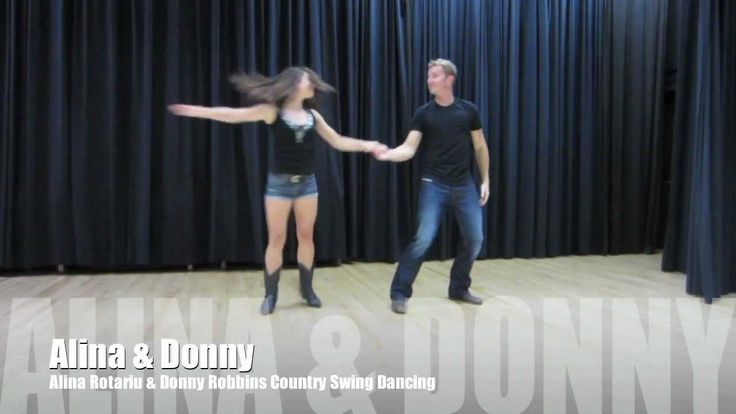 Also, children master the initial skills of acting and dramatic skills.
Also, children master the initial skills of acting and dramatic skills.
- Participation in circus performances, performances at reporting concerts, as well as other venues teach children to go towards their goals and achieve high results!
- Such training from a simple hobby can turn into a future profession.
Training is conducted by a trainer with 4 years of experience working with children and adults; 4 times Grand Prix winner; Multiple laureate of International and All-Russian competitions. Anna has mastered many genres: rubber, equilibrium, aerial gymnastics, acrobatics, juggling and Hula-Hups, and her pupils became holders of the diploma diploma and 1.2 degree laureate.
The trainer competently organizes each stage of training, and will do everything to make the children really interested, and the classes are effective.
Equilibr
One of the most ancient genres of circus art is balancing act. A feature of equilibrium and rubber is the ability to maintain balance in an unstable body position and flexibility.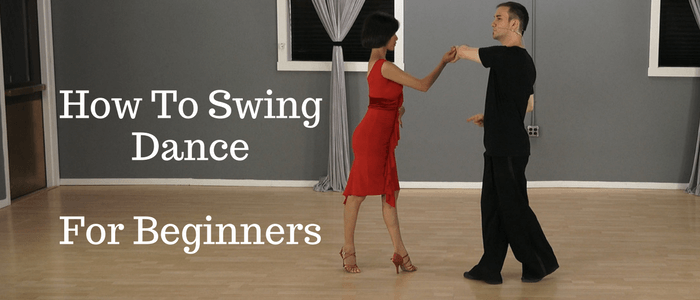 Your child will discover the possibilities of his body and do what at first glance seems impossible. The level of preparation and flexibility does not matter - in the classroom, an experienced teacher will select the load according to your strength.
Your child will discover the possibilities of his body and do what at first glance seems impossible. The level of preparation and flexibility does not matter - in the classroom, an experienced teacher will select the load according to your strength.
Acrobatics as an element of dance style
Physical exercises, which eventually became known as acrobatic, have been known since ancient times. People liked them and attracted those who dreamed of learning how to control their body, feel it, manage it and give everyone around them amazing spectacles, surprise them with their incredible physical abilities.
Acrobatics has always developed, because it has become an effective means of educating the spirit and improving physical and moral qualities, which are necessary not only in sports, but also in everyday life and work. Over time, the monotonous and dry sports acrobatics were replaced by such a dance direction as acrobatic dances, which today are a full-fledged and vibrant show with the addition of many dance and acrobatic elements.![]()
Acrobatic dance is a dynamic and very energetic dance, built on acrobatics with well-used acrobatic elements in the production, which makes it more spectacular, bright and memorable. This is an art that closely interacts with sports, because strength and endurance are as important here as plasticity and grace.
Acrobatic dances are also attractive because they can be easily combined with any, even the most unusual and completely unsportsmanlike, dance style or direction:
- modern;
- jazz;
- hip-hop;
- stripping;
- capoeira;
- rock and roll, etc.
It is this variety of dance styles and directions and their combination with acrobatic tricks that makes acrobatic dancing an incredibly attractive and popular trend among people who appreciate the perfect combination of dance and acrobatics itself. At the same time, acrobatic dances are 50% dance and 50% acrobatics.
Benefits of acrobatic dance
A beautiful acrobatic dance is the result of many hours of training, during which:
- coordination of movements develops;
- develops body flexibility and strength;
- develops the ability to control one's body, courage and determination;
- correct posture is formed;
- improves the functions of the vestibular apparatus.

And it is impossible to achieve mastery in acrobatic dance without the development of physical and moral-volitional qualities in oneself, the development of a sense of partnership, responsibility not only for oneself, but also for another. And this is very important not only in sports, but also in everyday life.
Especially useful are acrobatic dances in the studio for children, because they allow you to consolidate many skills and abilities, develop courage, endurance and willpower. At the same time, acrobatic dancing is incredibly beneficial for health. So, for example, acrobatic classes with a professional trainer contribute to the development and strengthening of the back muscles, which favorably affects the formation of the correct posture.
Moreover, acrobatic dances can also be considered as physical therapy. This is very relevant at the present time, when children spend more time in the virtual world and completely forget about sports and physical activity.
Acrobatic dances in Tula
Do you want to develop a sense of rhythm and artistry, get rid of the feeling of constraint or depression? Contact the DanceFit fitness and dance school in Tula and you will learn how to enjoy dancing. With us you will forget about shyness and over time you will be able to show everything that you are capable of and even more!
Our school is a unique antidepressant and gives you a chance to love yourself the way you are, and dance classes with us are a great way to spend time in a fun and useful way, developing not only your creative thinking, but also your physical abilities.
We are proud of our talented, wise and experienced teachers who can turn anyone, even a novice dancer, into a true professional. Having come to us once, you will not want to leave us, because here you will find friends, like-minded people and just like-minded people.
Within the walls of our school, not only dance elements are studied, but also various trick elements that help to make a dance performance colorful and spectacular.
Are you still wondering how to learn to dance acrobatic dances? Stop thinking, just come to our school! We will prove to you that everyone can dance!
Acro dance is a style that combines classical dance technique with the precision of acrobatic elements. This defines the sporting nature of the dance, its unique choreography, which incorporates elements of dance and acrobatics, as well as the use of acrobatics in a dance context. This is a popular dance style, both among amateurs and in professional dance theater such as Cirque du Soleil. Acro-dance in everyday life is usually shortened to just "acro".
Acro is a particularly challenging style for dancers as this dance requires the dancers to be trained in both dance and acrobatic skills. Acro dancers must be in excellent physical shape, because acro dancers are subjected to serious stress in the process of dancing. Although acro is a highly popular style of dance, many dance schools do not teach it, often due to a lack of funds or knowledge necessary for acrobatic training.
Acrobatic dance combines the elasticity of an acrobat with the grace of a dancer. Notably, acrobatic dance has been taught and performed in South Africa for over 50 years. Nine years ago, it was finally recognized as a sport and is now an officially registered discipline of the South African Gymnastics Federation.
Acrobatic dance appeared in the United States and Canada in the early 1900s as one of the types of productions that were shown in vaudeville. Although individual dance and acrobatic performances had already appeared in vaudeville for several decades before 1900, they did not become popular until the early 1900s, and did not combine dance and acrobatics to such an extent. Acrobatic dance did not suddenly appear in vaudeville, but rather, it appeared gradually over time in various forms, and consequently, no person has ever entered the annals of history as the creator of the acro.
With the decline of the vaudeville era, acrobatic dance underwent a gradual evolution until it became what we see today. The most important aspect of this evolution is the integration of ballet technique as the basis for dance movements, resulting in the acro's refined forms and movements that were absent from the acrobatic dance of vaudeville. In addition, in vaudeville, acrobatic dances were often nothing more than acrobatics to music, while modern acro dance is fundamentally different - it is a dance, with acrobatic movements inscribed in it.
The most important aspect of this evolution is the integration of ballet technique as the basis for dance movements, resulting in the acro's refined forms and movements that were absent from the acrobatic dance of vaudeville. In addition, in vaudeville, acrobatic dances were often nothing more than acrobatics to music, while modern acro dance is fundamentally different - it is a dance, with acrobatic movements inscribed in it.
Acro teaches flexibility, balance, strength, muscle control, and above all, discipline and concentration. Good acro schools subsequently give more freedom of expression to the performer. In acrobatic dance, dance elements from ballet, jazz, modern dance, or even tap dance can be added to make the dance a reflection of personality. There are no rules restricting movement.
History
Acrobatic dance first appeared in the US and Canada in the early 1900s as part of vaudeville.
Composition
The composition of acrobatic dance is based on the etude-figurative style of arbitrary combinations. The etude-figurative style implies, along with good technical training, the presence of a level of expressive abilities and artistry. This style requires a special careful approach to the choice of music, the penetration into its content, the composition of its own plot (like a ballet libretto) and the search for expressive means. This style requires a deep study and careful mastering of gymnastic, acrobatic elements and connections, as well as the ability to create plastic, emotional-motor, or artistic images by athletes.
The etude-figurative style implies, along with good technical training, the presence of a level of expressive abilities and artistry. This style requires a special careful approach to the choice of music, the penetration into its content, the composition of its own plot (like a ballet libretto) and the search for expressive means. This style requires a deep study and careful mastering of gymnastic, acrobatic elements and connections, as well as the ability to create plastic, emotional-motor, or artistic images by athletes.
Funds
Basic expressive means of acrobatic dance:
- harmonious movements and postures;
- plastic expressiveness and facial expressions;
- dynamics, pace and rhythm of movement;
- spatial drawing, composition (creative construction to the music of individual elements and compounds).
Athletes may use elements of free movement and dance technique in their performance (for example, modern, jazz, classical, historical and everyday, folk and characteristic dances), but they should not dominate and be basic.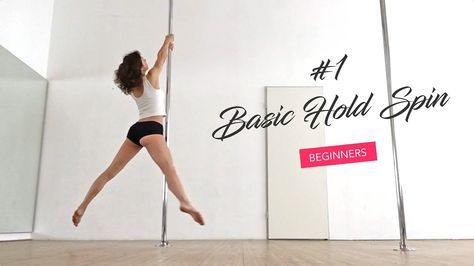
The costume must correspond to the etude-figurative style of acrobatic dance.
Prohibited
It is forbidden to use and include in the basis of the composition of acrobatic dance such directions, styles or disciplines as: sports aerobics, acrobatic rock and roll, as they already have their own pronounced sports or dance style and thus contradict the concept of etude-figurative style acrobatic dance.
It is forbidden to use additional props in an acrobatic dance on a stage or competition area.
See also
Notes
Links
Wikimedia Foundation . 2010 .
- Akryony (Petrikovskiy district)
- Acroballists
See what "Acrobatic dance" is in other dictionaries:
Dance - This article or section needs revision. Please improve the article in accordance with the rules for writing articles ... Wikipedia
Jazz dance - Modern Jazz Dancers Jazz dance is a classification that includes a wide range of dance styles. Until the 1950s, jazz dance referred to dance styles that originated from the African American Native ... ... Wikipedia
Until the 1950s, jazz dance referred to dance styles that originated from the African American Native ... ... Wikipedia
Rock and roll (dance) - This term has other meanings, see Rock and roll (meanings) ... Wikipedia
Swing (dance) - This term has other meanings, see Swing. Swing is a group of dances that developed during the "swing era" (later 1920th 1940s), as well as modern dances derived from them. Historically, swing has been categorized in African American ... ... Wikipedia
Boogie-woogie (dance) - This term has other meanings, see Boogie Woogie. Boogie-woogie is a social dance that appeared in Europe in the second half of the 1940s based on the Lindy Hop. Refers to swing dances, performed under rock and roll and rockabilly. Closest to ... ... Wikipedia Dictionary of Dmitriev
CHINA. SOCIETY - TRADITIONAL SOCIETY Class structure. Like other Eastern societies, traditional China has had a political structure with extraordinary power for centuries.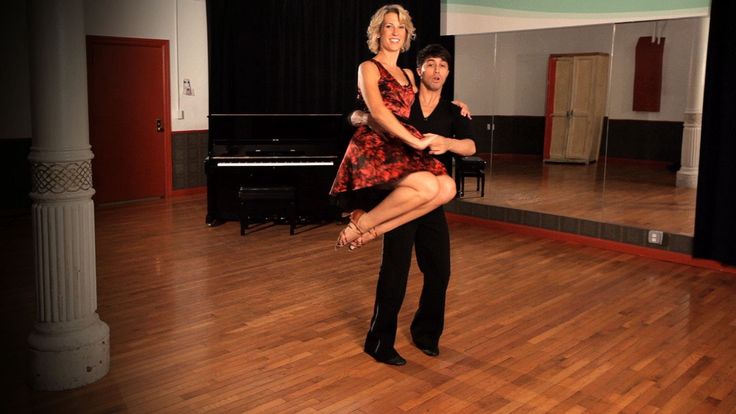 The emperor was the only source of power, ... ... Collier's Encyclopedia
The emperor was the only source of power, ... ... Collier's Encyclopedia
Acrobatic elements can be used in various dances. Thanks to them, dances become much brighter, more spectacular. You can name such as capoeira (it also applies to martial arts), break dance, hustle, acrobatic rock and roll. However, teaching this type of dance is quite difficult. But it is precisely because of the acrobatic elements that these areas are becoming popular among young people. Let's talk about some types of this direction.
Break dance (street dance), it has elements of acrobatics, it represents the trend of hip-hop culture. To perform acrobatic elements in it, a certain skill is required. Beginners, of course, will not be able to perform complex elements without getting injured in the process. But when the dance is performed by a master, it is very impressive, because the acrobatic elements are so perfect and magnificent that it is simply impossible not to admire them.
Acrobatic rock and roll is also considered a sports dance, which is performed at various competitions.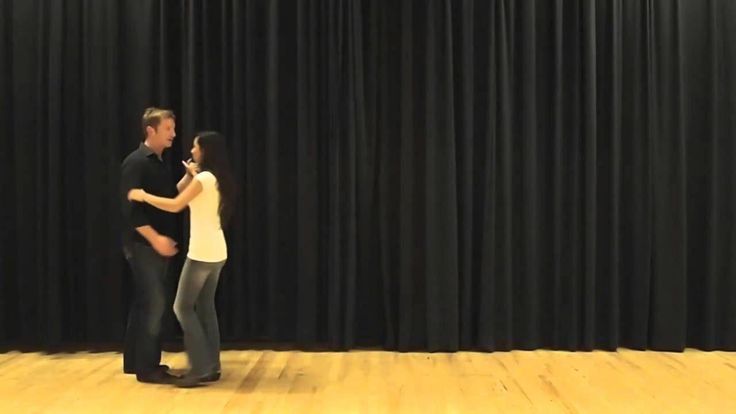 It is danced in a group or couple. In it, dance movements, acrobatic and choreographic elements are closely intertwined. It is performed to rhythmic music for only a minute and a half. In the program, characteristic foot movements are usually combined with acrobatic and semi-acrobatic elements that are used to decorate the dance, but they are taken into account when the winner is determined. All, without exception, acrobatic stunts must necessarily be associated with dance, and their separate performance does not play a special role. Women who dance dances with elements of acrobatics should pay special attention to their clothes, especially underwear, because. Properly selected women's underwear facilitates movement and liberates a woman, allowing her to perform difficult tricks.
It is danced in a group or couple. In it, dance movements, acrobatic and choreographic elements are closely intertwined. It is performed to rhythmic music for only a minute and a half. In the program, characteristic foot movements are usually combined with acrobatic and semi-acrobatic elements that are used to decorate the dance, but they are taken into account when the winner is determined. All, without exception, acrobatic stunts must necessarily be associated with dance, and their separate performance does not play a special role. Women who dance dances with elements of acrobatics should pay special attention to their clothes, especially underwear, because. Properly selected women's underwear facilitates movement and liberates a woman, allowing her to perform difficult tricks.
Couple dance - Hustle is an impromptu dance. It is called: "social dance", and you can dance it even with a partner you don't know very well. It is quite simple and dances to any tune you like. Acrobatic elements in this dance are mastered at the very last turn (upper acrobatics and other tricks). They can be easily mastered if you work well with a partner. Moreover, if they trust each other, then there will be no need for special strength.
They can be easily mastered if you work well with a partner. Moreover, if they trust each other, then there will be no need for special strength.
Thus, the example of these dances showed that acrobatic elements can be mastered, of course, not immediately, although they are not always very difficult. You just need to know the basics of dance well and be able to perform it, and then begin to perform more complex elements that make the dance so spectacular and spectacular.
Articles » Lessons and tricks on jumpers (Jollyjumper, Poweriser)
New fashion will cover the whole world!
The general guidelines for practicing with the Jollyjumper are as follows:
Practice Area:
Make sure the practice surface is level and firm before using the Jollyjumper.
Use this attachment in a wide and obstacle-free area to avoid falls.
Preparation:
Wear comfortable clothing and sports shoes.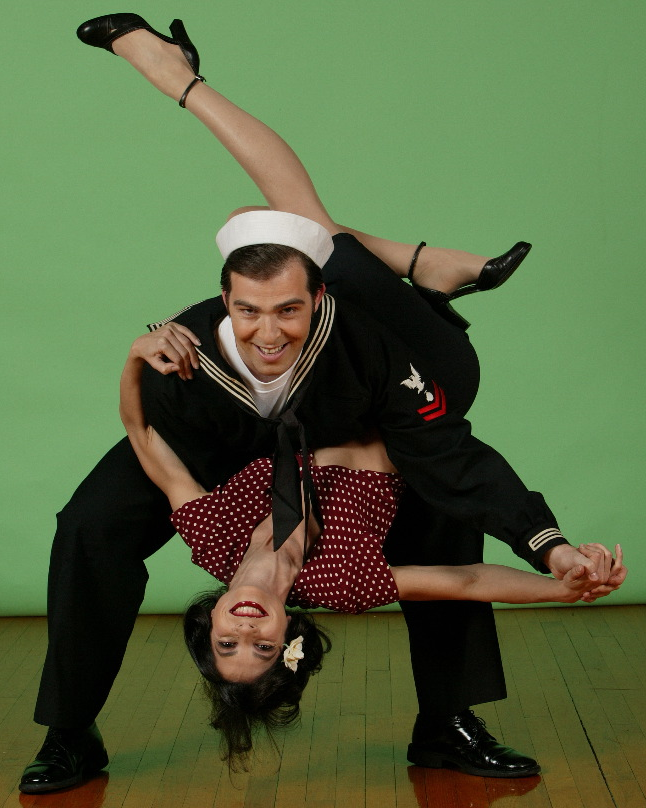
Do warm-up exercises.
Wear protective equipment: helmet, knee pads, palm and elbow guards.
Inspect and test the Jollyjumper. (Notes: All bolted connections have a special type of resilient pad for secure fastening to prevent slipping or shifting of knots. If you find anything improper, please contact the customer service center.)
Attach the Jollyjumper to your feet
How to use it:
Beginners should fasten the Jollyjumper buckles on the boot at a high enough position.
Leg support straps must be tight. Adjust the zippered part of the foot support platform and fasten well to place your foot in the best position, especially the heel. Fasten the straps tight. You can climb and stand on the Jollyjumper with the help of the wall or your friends. After sufficient training, you can start doing simple jumps.
How to get up after a fall:
Usually, novice users cannot get up after a fall, they need outside help; Please do not walk, run lightly or jump without help during the learning phase.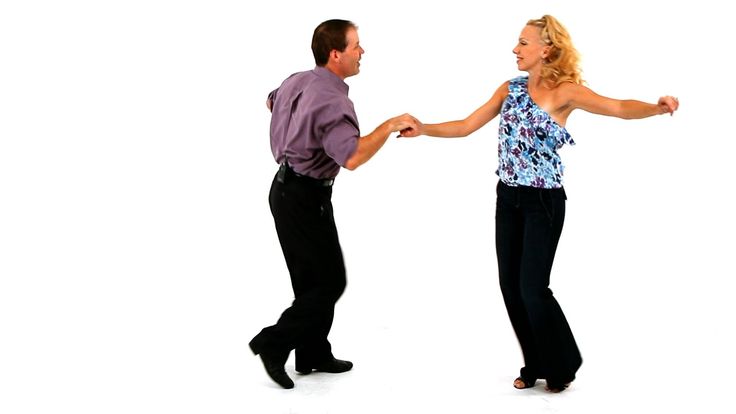 Over time, you will learn to stand up with one of your legs and without assistance.
Over time, you will learn to stand up with one of your legs and without assistance.
Safety Warning:
If you have a broken or torn soft tissue, if you are injured during a fall, if you are not in good health or have a slow reaction time, please do not use this device.
If you haven't done enough warm-up exercises, please don't stand on the Jollyjumper.
If injured by a fall, remove this device and seek medical attention if necessary.
Please do not repair, modify or disassemble the Jollyjumper yourself.
If you have any questions, please contact your dealer or customer service center.
Wipe off dust, water and dirt with a damp cloth after using the Jollyjumper to prolong its life.
Please do not use jolly jumpers in the marked areas:
- Narrow road;
- Places where it is difficult for vehicles to stop;
- On street corners and intersections with limited visibility;
- On a soft surface: for example, in a meadow or on mats, because this surface is too soft to lean on;
- On any kind of slopes and stairs: you may injure yourself or injure others;
- Near obstacles.
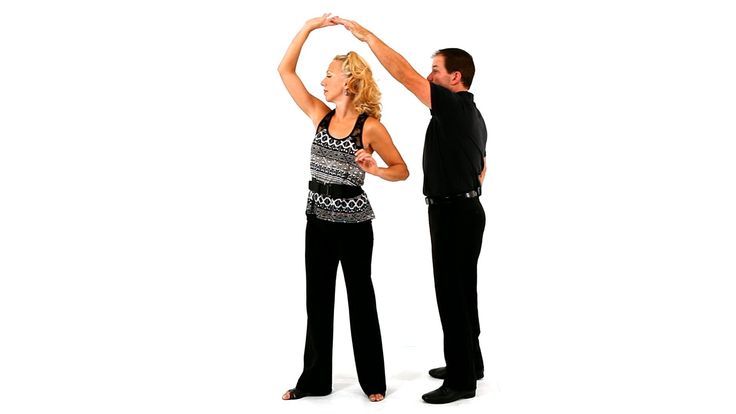
Lessons
Before you start!
We recommend that you purchase the necessary protective equipment - a helmet and protective pads for wrists, elbows and knees. Never use Jollyjumper devices without protection.
Be careful:
Do not use the Jollyjumper on wet grass, ice or other slippery surfaces. Try not to step on fallen leaves and paper lying on the ground, as you do not know what is under them. Beware of puddles.
Lesson 1 - Getting up and walking with help:
1. Few people are able to get up on the first try without help. No matter how good a student you are, at first you will need help to keep your balance. Do not try to get up on your own right away, as you will most likely fall right there. We recommend that you start by sitting on a bench or a low wall and ask a friend to help you up.
2. Make sure your helper is holding you securely before attempting to stand up for the first time.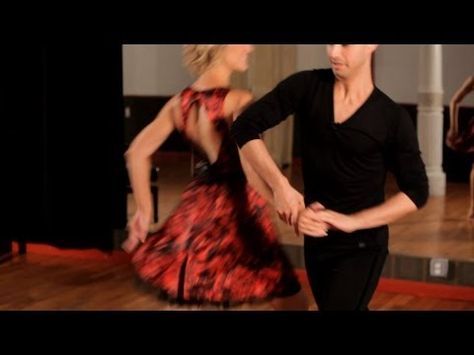 At first you will feel awkward and awkward, but you will soon get used to it. Gently take the first steps, holding on to a friend, until you relax and adjust to the new sensations. Don't forget to give your feet a rest from time to time.
At first you will feel awkward and awkward, but you will soon get used to it. Gently take the first steps, holding on to a friend, until you relax and adjust to the new sensations. Don't forget to give your feet a rest from time to time.
Lesson 2 - Walking on your own:
1. You will soon be confident enough to start walking on your own, but ask a friend to be around just in case. Walk with your legs as far forward as possible, otherwise the springs can catch on each other. But be careful - raising your knees too high, you risk falling.
2. To begin with, do not stop holding on to your helper, but do it only slightly, no longer leaning on him completely. When you feel your balance is good enough, try letting go of the helper and walking completely on your own. Try to relax, because if your body is tense when walking, it will be much more difficult to keep your balance. Have a friend by your side in case you need their help.
Lesson 3 - Getting up after a fall:
Hopefully you won't have to learn to get up after a fall, but if you do, the easiest way to get up is obviously to grab onto something to help you get up.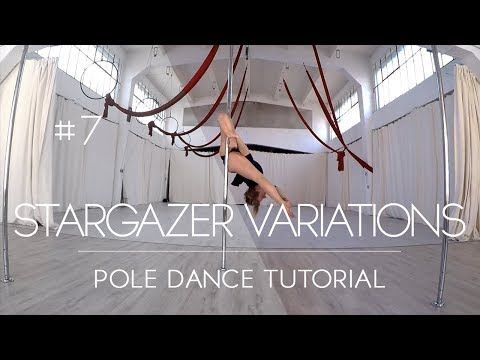 A suitable support can be, for example, a bench or a fence. It is best to ask a friend to support you.
A suitable support can be, for example, a bench or a fence. It is best to ask a friend to support you.
To stand without support or assistance, take one foot forward and one back, as in a long jump. Bend your forward leg at the knee so that you can stand on it, while placing the other leg on your knee. When you feel that you have sufficiently bent your front leg, take a small jump and stand on both legs. This is the hardest part, as it is very easy to lose balance and fall backwards at first. Therefore, before you try to jump up and get up, try to get into the starting position as stable as possible.
Lesson 4 - Running:
By learning to walk, you can quickly learn to run, but remember to keep your balance, because the faster you run, the higher the risk of catching the springs with each other. Practice for good results.
Gradually increasing the walking speed, you can easily switch to running. The subtlety is that in order to take longer strides, you need to loosen the tension in your legs, allowing the springs to work harder.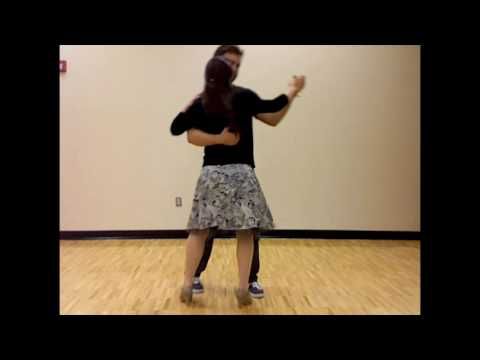 At first, the sensations in your legs may seem strange to you, but this will pass quickly. Raise your feet higher to avoid tripping on the pavement or uneven ground.
At first, the sensations in your legs may seem strange to you, but this will pass quickly. Raise your feet higher to avoid tripping on the pavement or uneven ground.
Lesson 5 - Jumping:
Very soon you will be able to run at great speed, outrunning bicycles and skateboards. The next task is to learn how to jump. There are two main types of jumping:
1. Jumping with one foot is just a form of running. The main difference is to direct the force upward rather than forward. Try to stand in place, and jump with your right, and then with your left foot. The point is to push off as hard as possible when the leg is in the lowest position, as far as the spring allows, to jump up and land on the other leg.
2. When jumping from two legs, it is much more difficult to maintain balance, since the combined resistance of both springs is stronger. This jump is the most important, as it is able to throw you two meters up. To begin, stand in place and push down on the springs with your knees slightly bent. Do this once and stop to balance. When you feel that you can easily perform this movement without losing your balance, do it several times in a row. Now you just need to practice a little to feel confident. The more you press on the springs, the higher you will jump.
Do this once and stop to balance. When you feel that you can easily perform this movement without losing your balance, do it several times in a row. Now you just need to practice a little to feel confident. The more you press on the springs, the higher you will jump.
Expert tricks
Giant jumps:
Giant jumps are natural proof that you are a top jumper. To start, make a few small jumps on both feet, each time throwing your legs straight forward and pushing harder and harder to jump further and higher. As always, do not forget to pre-do all the necessary warm-up and stretching exercises to avoid injury.
Rear grip:
This is a great trick if you can keep your balance. Jump on both legs at the same time, while trying to bend both legs back. It will be better if both legs are brought together. As the jumps get better and better, try to bend your legs more and more. When you can perform such jumps without falling, turn your torso to the right or left while jumping, and grab the soles of the springs with one hand.